Have you ever paused to watch bees work their way through a flower patch? They seemingly know just when the flowers are in bloom, full of nectar and pollen, and zero in, like magic. Well, it turns out that pollinators see a garden in an entirely unique way compared to you and I, and it's pretty amazing.
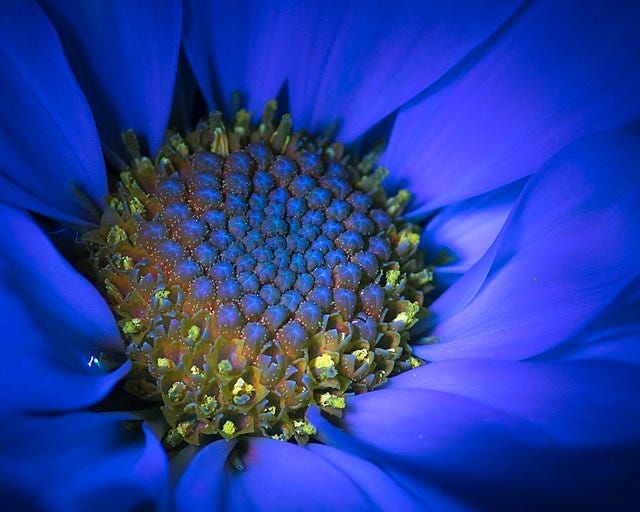
Basic Biology
If you've ever seen a macro-view of a bees face, you'll know that their set up is quite different compared to a humans. Bees have five eyes compared to our two and they come in two different forms.
Ocelli ('little eye' in latin) are the three smaller, single-lensed eyes that sit in the centre at the top of the head. They help bees to navigate and maintain stability; detect ultra-violet light and judge light intensity
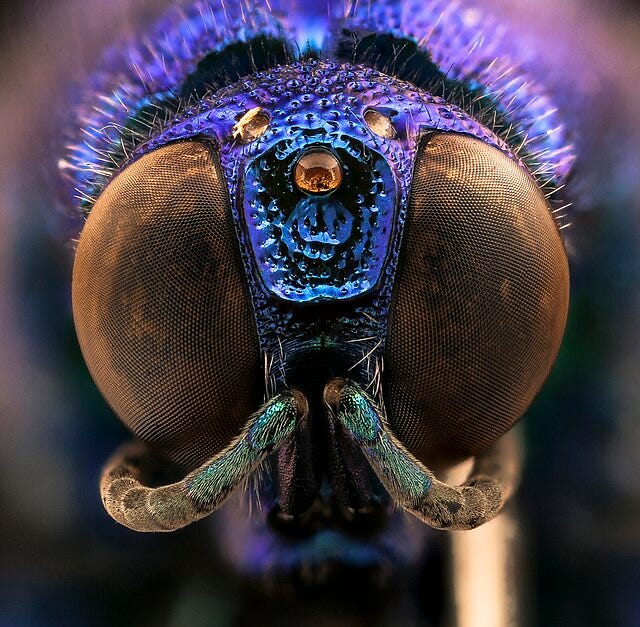
In fact, some species of nocturnal bees have larger ocelli than their diurnal cousins. Giving them a greater sensitivity to light, which allows them to fly in the dim moonlight or early morning dawn.
There are also two huge, Compound eyes, on either side of the head. These contain thousands of tiny lenses called facets. And, each facet collects a small area of the bees ultimate vision.
A worker bee has 6,900 facets while drones boast, 8,600. All of which, transmit information which combines in the bees brain, like a mosaic, and makes up the complete image that the insect 'sees'. The domed Compound eyes give bees 280-degree sight, compared to our 180-degree vision.

Bee Vision
When light hits an object, some is absorbed and some is reflected. The reflected part is what we see as colour. Both human and insect eyes are trichromatic, there are three photoreceptors. But, our eyes see light in wavelengths from 390-750 nanometers while bees see between 300 and 650 nanometers. So, the colour spectrums that we see are slightly different. Bees are missing most of the red end of the spectrum but can see the UV portion, that we cannot. Human eyes see combinations of blue and green and red, while bees see ultraviolet, blue and green.
Although they can't see the colour red, bees are able to detect reddish wavelengths. Which means that they can see yellow and orange. However, blue, violet, blue-green and 'bee's purple' (a combination of UV and yellow) are what they prefer and find the most attractive.
Their ocelli can also detect polarized light, which moves in one direction. And depending on the angle at which it's viewed, may change the colours that are seen. It is this iridescence that is often registered on the UV spectrum. Unlike humans, bee’s are able to detect and match these patterns in the sky and use them like a map. Which can then be shared with members of its hive, pin-pointing a flower patch for all to visit.
Flower Billboards
A bees unique sense of sight means that they can see markings on flowers that are invisible to humans. There are plant parts that advertise their nectar; they have the ability to absorb ultraviolet light and then reflect it in 'target' patterns. The nectar literally glows in the centre of a bullseye.
In addition, pollinator vision is the fastest in the animal world, five times faster than humans. So while we may have trouble distinguishing one flower in a group from another, bees don’t. They see each individual flower, all at the same time.
Bees also have an exceptional “flicker” threshold. They can spot individual flowers while traveling at high rates of speed; they actually respond better to moving objects than stationary ones. Which is why they're so difficult to catch.
Bee's-eye Camera
So, now that you know all kinds of interesting facts about how a bee's eye functions, you may be wondering, what does all of that look like together? And, you wouldn't be alone. For several decades now, scientists and amateurs alike, have been trying to recreate what a pollinators-eye view of the world might look like.
Some of the most beautiful and psychedelic imagery comes from UVIVF (ultraviolet-induced visible fluorescence) photography. It involves a dark room or space where the subject matter is illuminated with a special UV torch. Certain parts will then absorb the light and fluoresce it so that a camera can record it. This type of photography is a science itself, but the imagery that it produces is pure magic. And although it may not quite integrate all of the aspects of an insects vision, it certainly gives us some sense of what being an insect looks like.
So, the next time that you take a break near some flowering plants, have a thought for how our insect friends might see it, it's a fascinating exercise.
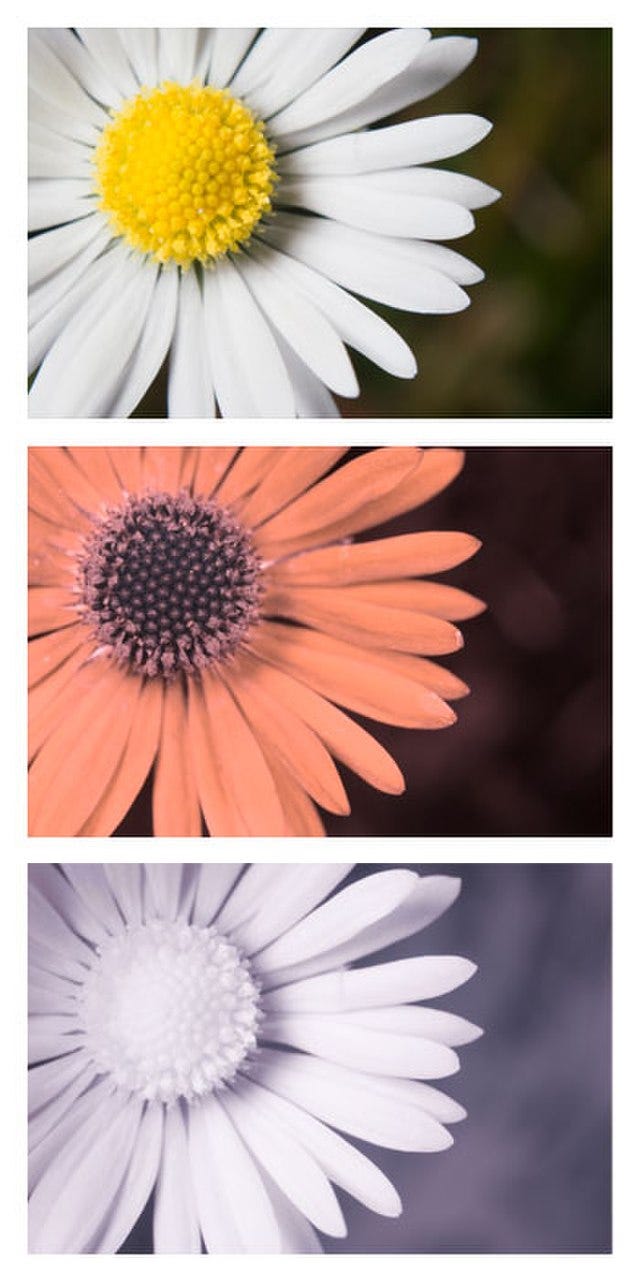
Sara-Jane at Virens Studio
Virens is a studio located in Vancouver, BC. We specialize in Ecological Landscape & Planting Design, Consultation and Horticultural Writing. Say hello and follow us on Instagram.





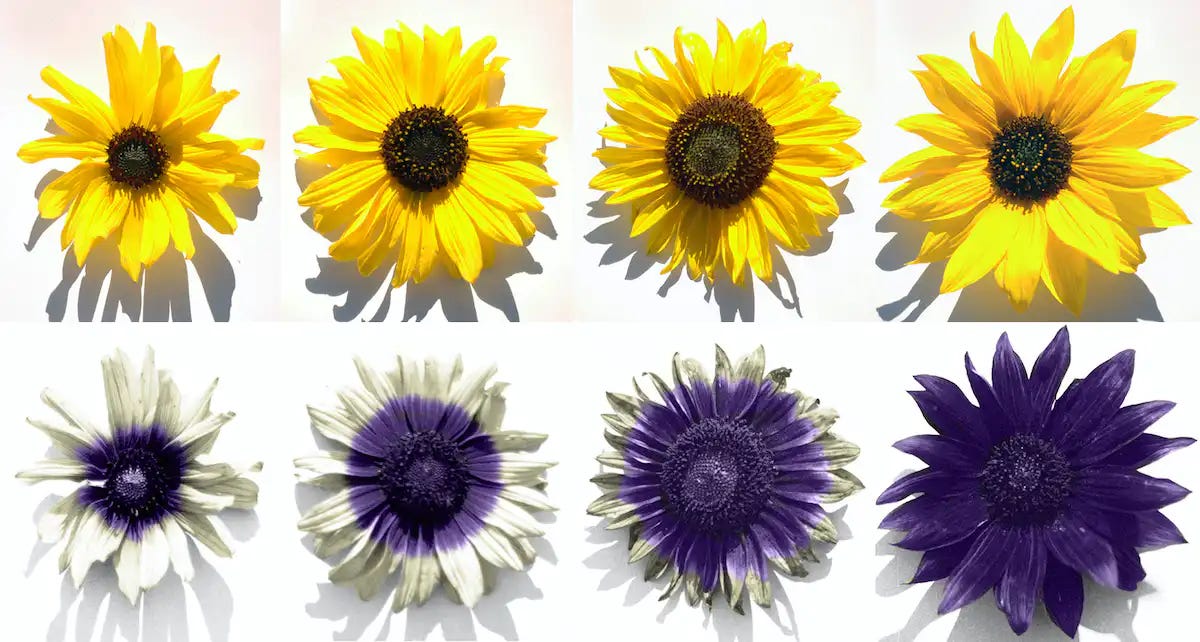
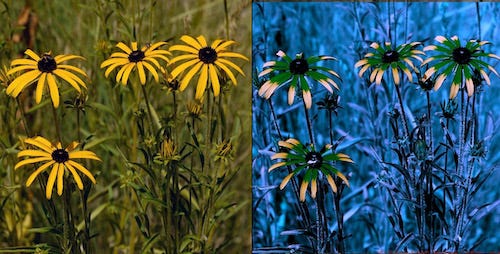

wow! such a lovely exploration. It makes sense, since their lives revolve around flowers, to see them so clearly and beautifully. Thank you for these insights.